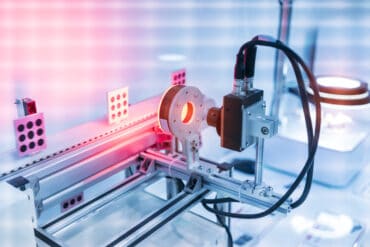
Cognitive automation allows the once tedious task of unstructured data entry and compilation to be delegated to cognitive process automation-powered bots.
Earlier this year, 1.5 million Americans flocked to the official site of the ACA during the 2021 Marketplace Special Enrollment Period. These new additions resulted in a staggering nationwide total of 12.2 million Americans enrolled in marketplace healthcare – a record high.
However, significant obstacles still stand between healthcare providers and quality patient care. A 2021 study from the Association of American Medical Colleges is predicting a major physician shortage by 2034. The data used for the study was from 2019 – prior to the COVID-19 outbreak – and doesn’t consider the number of medical staff that quit or retired since the pandemic began. Additionally, more than 3,600 health workers died in 2020, and the World Health Organization is warning that healthcare worker burnout as a result of the pandemic will have serious effects.
The 2022 Open Enrollment Period is an opportunity for many uninsured and underinsured Americans to access health insurance, but these patients may still face obstacles in receiving medical care. Healthcare providers that are considered in-network for these plans face a large increase in patient appointments yet have less available staff and physicians to provide quality care.
This leaves the healthcare system searching for smart solutions to work through higher demand for services with less human resources.
Download Now: Building Real-time Location Applications on Massive DatasetsHealthcare and cognitive process automation
During peak times, healthcare facilities face an increased workload on two fronts. Treating patients is the priority and a demanding endeavor even prior to the pandemic. And while extraordinary advancements have been made in using AI to diagnose and treat medical conditions, few headlines are written about the impact of robots behind the front desk.
However, machine learning is changing the way healthcare process management is run. Thanks to cognitive process automation (CPA), bots are now able to read and interpret medical claim forms and match medical notes. Advancements in optical character recognition (OCR) and natural language processing (NLP) enable these same bots to understand and respond to requests. And, according to a McKinsey study from 2019, 36% of healthcare services can be automated, which is a strong endorsement for incorporating cognitive automation into daily processes.
In the last year, CPA has increased productivity, efficiency, and accuracy for healthcare providers. Pre-trained bots can take over monotonous, rote work like general administration and data entry. Ordering, obtaining, and processing labs becomes easily delegated. More than just standard robotic process automation, these bots even use machine learning to make informed decisions, just like human employees.
The upcoming Open Enrollment Period could add a considerable workload to an already over-burdened healthcare office staff, but CPA can provide relief. Medical record organization, work schedule creation, human resources, financial management, and more can be fully automated, allowing administrators more time and resources to focus on supporting their staff and patients.
See also: Bringing Healthcare into the Digital Age
A reliable solution in unreliable situations
During periods of high demand, whether expected or unexpected, it’s easy for staff to become overworked and fall behind. Even hiring additional staff can cause strain for existing employees expected to train the new hires, and the training period can take too long to be a profitable course of action. This is a hurdle many medical offices will face with the 2022 Open Enrollment Period.
With CPA, bots can blend human intelligence and decision-making with the speed and accuracy of robotic AI. Just like human employees with a work history, pre-trained bots can understand the industry lingo, read handwritten documents, and make inferences and decisions rooted in past experiences.
The bots can even scale their efforts to take on a heavier workload than normal by multiplying themselves to meet increased demand. This makes these cognitive solutions ideal for healthcare services, which is an industry largely unprepared for the projected shortages we will face within the next decade.
The power of data processing in cognitive automation
Data organization and analysis are trending topics in the world of healthcare process management. Cognitive automation allows the once tedious task of unstructured data entry and compilation to be delegated to CPA-powered bots, fully equipped to automate the entire process.
With CPA, healthcare providers can find, organize, and process patient data at a much faster rate than ever before. This allows clinical staff to spend less time on monotonous tasks and more time ensuring compassionate care and pleasant experiences for patients, especially as the initial industry outlook predicts more severe medical cases due to delayed elective and routine care throughout the pandemic.
Even patient onboarding becomes an easier process with CPA sorting data. Scheduling appointments, collecting relevant information and documentation, and even revenue recovery can be fully automated, saving precious time and resources. Nursing, in particular, is estimated to be 30% to 50% more productive with the help of AI and cognitive automation.
With ACA enrollment at a record high of 12.2 million Americans, healthcare systems and providers must prepare now for an increase in seasonal demands for the 2022 enrollment period and beyond. AI and cognitive automation are increasingly relevant, and well-timed solutions for the challenges healthcare institutions may face, given that the processes are highly automatable and efficient.
As the United States continues to come to terms with the effects of COVID-19, healthcare systems and providers should put value in tools that will allow staff to deliver a better quality of care while reducing errors and manual output.
An accessible advancement in healthcare via congnitive automation
Though medical advancements like surgery-performing robots and cancer-detecting AI are lauded, widespread use is neither practical nor imminent. Small, understaffed clinics won’t have access to the state-of-the-art resources that often makes headlines. Additionally, the impact won’t be felt by the average American.
However, cognitive process automation is accessible for even the smaller clinics, making up for the decrease in staff. Additionally, the impact can be felt by both patients and healthcare workers as these bots alleviate a stressed system.
Though it doesn’t have the same headline appeal as a diagnostic robot, the impact of healthcare automation is far more tangible, realistic, and – given the shortage of healthcare workers – more crucial than ever.





























